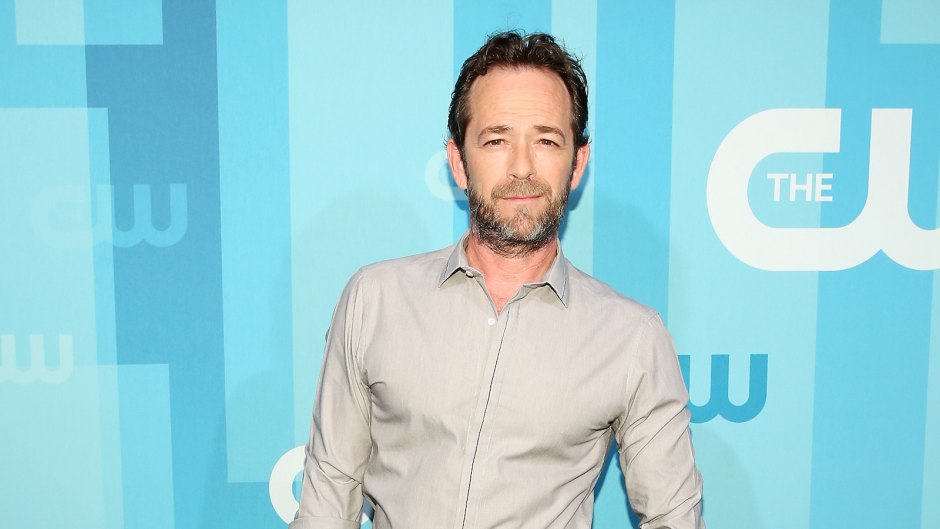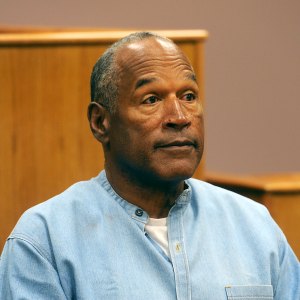
Getty Images
What Causes a Stroke? Luke Perry’s Sudden Death Sparks Questions About Warning Signs
After the heartbreaking news of Luke Perry‘s death broke on Monday, March 4, fans and friends alike have been alarmed by the fact that the actor was seemingly relatively young and in shape when he suffered a stroke. A source told In Touch that the 52-year-old Riverdale star had been “doing very well health-wise.” A few years earlier, he’d had a cancer scare, but other than that, there didn’t seem to be anything to indicate that he was unwell. So what went wrong — and what causes a stroke in the first place? We talked with Fawaz Al-Mufti, MD, a neurologist at Westchester Medical Center in Valhalla, New York and Shazia Alam, MD, Director of Stroke Services at NYU Winthrop Hospital in Mineola, New York about the signs and symptoms.
What are the early signs of a stroke?
“It typically begins with acute neurologic deficits,” says Dr. Al-Mufti. That could mean “weakness on one side of the body, occasionally you can have numbness in the body, visual disturbances, vertigo or dizziness, having double vision, imbalance or incoordination.” You may also see confusion or “even behavioral personality changes … depending on which [area] of the brain is involved.” Another sign that can be trickier to spot is “difficulty in articulation or word-finding difficulties.” One of Dr. Alam’s patients recognized that she was having early symptoms of a stroke when she couldn’t remember the words “computer” or “storm” while discussing a snowstorm. A “sudden onset of severe headache” can also be a warning sign.
How soon can you spot a stroke?
Dr. Alam’s patient realized she was struggling to remember words on Sunday, March 3. But Tuesday, March 5, she was recovering in the NYU Winthrop Hospital. Typically, though, Dr. Al-Mufti notes that most symptoms are seen in the moments before. Additionally, there are two different types of strokes: hemorrhagic, which means “there is blood inside the brain, within the tissue of the brain,” or ischemic, which means there is “not enough blood getting to the brain.”
“Some patients may experience a transient ischemic attack (TIA) which is a brief episode of stroke-like symptoms but does not lead to permanent damage,” said Dr. Alam. “These are considered a ‘warning sign’ of an impending stroke as about one in three patients who experience a TIA may go onto having a stroke in the next year. It is important to take these seriously and seek urgent medical help as these could prevent a stroke from happening.”
Are there risk factors for having a stroke?
It depends on the kind of stroke that you have — but typically, risk factors include elevated blood pressure, especially “poorly controlled” high blood pressure, as well as elevated cholesterol, and having diabetes. A family history of stroke can also put you at a higher risk, as can “Atrial fibrillation, carotid stenosis, coronary artery disease,” said Dr. Alam. “There are also lifestyle choices such as smoking, illegal drug use, excessive alcohol use, diet, lack of exercise — all can increase the risk of stroke.” But you don’t need to have a high risk factor to be at risk of having a stroke.
What causes a stroke?
“The cause of a stroke if a patient doesn’t have any risk factors includes injury to the blood vessels in the neck or, if it’s a hemorrhagic stroke, it could be a vascular malformation that may have ruptured and caused the bleed,” says Dr. Al-Mufti. Injuries to blood vessels in the neck could restrict blood flow, meaning not enough blood reaches the brain. A ruptured vascular malformation could send too much blood to the brain. Strokes can be further complicated if swelling on the injured portion of the brain becomes serious enough to endanger the healthy side of the brain.
Can you have a stroke even if you’re otherwise healthy?
Unfortunately, yes. Dr. Al-Mufti says that strokes in patients in their early 50s aren’t uncommon. “Not infrequently, people could be much younger now,” he said. “In Luke Perry’s case, the media kept reporting a massive stroke. Massive strokes can occur in approximately 10% of all strokes. They’re classified as malignant or massive strokes because of the presence of the larger [area] of the brain that is involved, and that causes a lot of swelling, a lot of edema in the brain. … Unfortunately, the skull is a closed structure, so when you have a lot of swelling, the brain … doesn’t have anywhere to go. That causes pressure on the normal side of the brain.”
Because younger people’s brains have atrophied or shrank less over time, that means there’s less room for swelling in the skull. “The younger you are, the less atrophy, the less shrinkage you have, the more likely you are, if you do sustain a stroke, that it’s going to be a massive stroke,” Dr. Al-Mufti continued. Dr. Alam’s patient has a story much like the Beverly Hills, 90210 actor’s, but with a happier ending. As a 50-something personal trainer, she was in great shape and likely had low risk factors. Thankfully, she’s now on the mend.
What should you do if you think you or someone else is having a stroke?
There’s an easy mnemonic that can help you remember what to do in a crisis says Dr. Al-Mufti. It’s called FAST. The F stands for facial drooping, a symptom that can be the first warning sign. The A stands for arm numbness, weakness, or tingling, though the same symptoms can present in a leg as well. The S stands for slurred speech. And the T stands for time to call an ambulance if you have all of these symptoms. Dr. Alam notes that it’s also crucial to keep track of when symptoms began.
“It is really important to note when symptoms first appeared or when the person was last seen in their ‘normal’ state as this may help the doctor decide if they are eligible for a ‘clot-busting’ medication that could potentially dissolve the blood clot,” she said. “However, [it] can only be given in a certain time window from the stroke onset.”
Ultimately, simply being vigilant and responding quickly is the best thing that you can do. “Anybody can save a life if you look for these signs and symptoms,” said Dr. Al-Mufti.
Have a tip? Send it to us! Email In Touch at contact@intouchweekly.com.








































